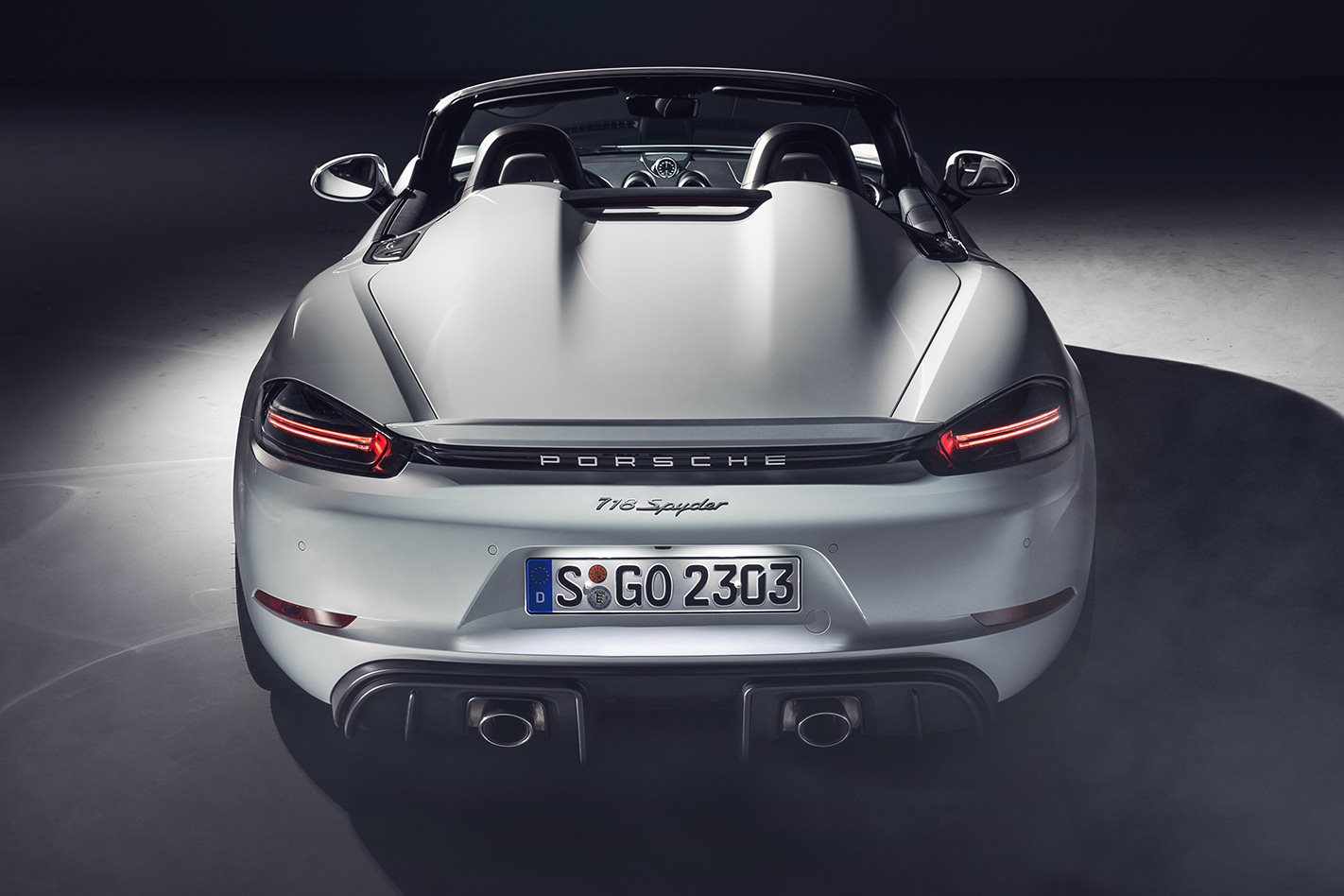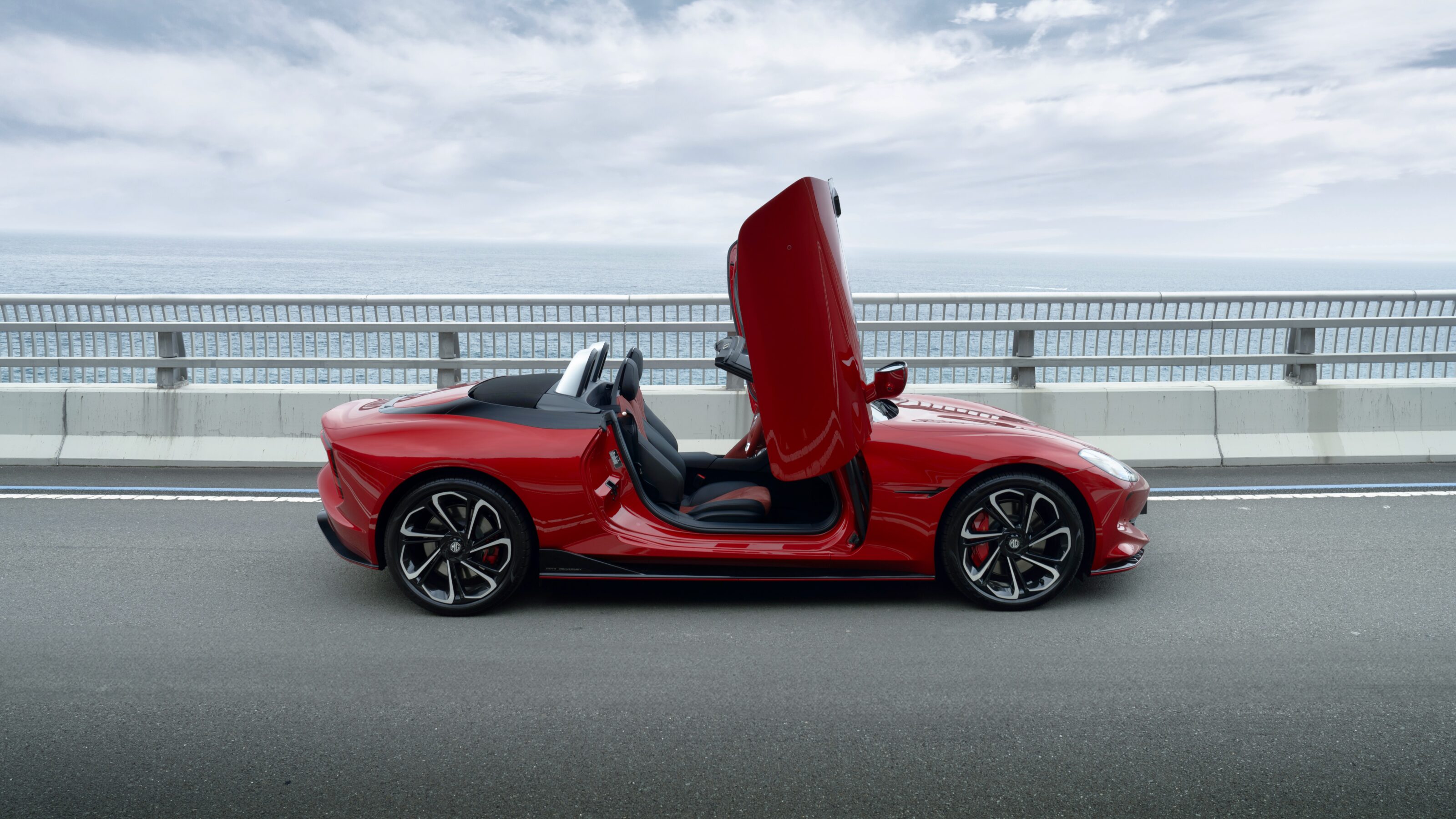Porsche’s latest 718 Cayman GT4 and Boxster Spyder have been unveiled, headlined by an all-new naturally-aspirated 4.0-litre flat-six engine.
Wheels was invited to an exclusive walkaround of the new GT4 where Porsche’s GT road car boss Andreas Preuninger described the engine as “a clean sheet design” – even if it is based around the 992 Carrera S’s 9A2 Evo 3.0-litre turbo flat-six.
To make matters more confusing it looks like the very same engine configuration that sits aft of the 911 GT3’s rear wheels, and you’d be forgiven for thinking that it was the very same engine; it shares a 4.0-litre capacity, and key specifications such as an 81.5mm stroke and 102mm bore echo the GT3’s specification sheet. It’s also dry-sumped.
However, unlike the stratospheric 9000rpm rev-monster found in the 911 GT3, the GT4’s mill is a clever new masterpiece that’s unique in Porsche’s atmo six line-up. It features piezo injection and active cylinder control to help lower emissions, and, crucially, it can be built alongside the standard Carrera engine so it is significantly cheaper to supply.
Knocking back any suggestion that the GT4’s engine is perhaps more similar to the Carrera S than the GT3, the GT department engineers say around 80 percent of the new GT4 motor is unique and necessary to bring ‘GT3-light’ performance to the 718.
The crux of having to design and build the new engine is that putting the GT3’s mill inside the 718 Cayman and Boxster just wasn’t an option as it is one of the most expensive engines in a production car today – and one that is specifically set up for rear-engined layout. Even if it could be turned around, it would push the Cayman GT4 and Boxster Sypder to a price point that just wouldn’t work.
But that’s not to say that the new engine is in any way lacking.
It officially develops 309kW at a 7600rpm, and Preuninger says it’ll redline to a screaming 8000rpm. Peak torque is 420Nm produced between 5000rpm and 6800rpm. All of that energy is put to the rear wheels through a six-speed manual transmission with switchable ‘Auto Blip’ rev-matching for perfect, rev-matched downshifts like the recent 911 Speedster, and can be switched off if it’s not to liking.
Like their GT4 and Spyder predecessors, there’ll be no PDK. Preuninger says that including an automatic transmission was discussed, but such was support for the GT4 and Boxster Spyder to remain a manual-only proposition that it was quickly dismissed.
While are both are positioned as entry-level GT cars, Preuninger says he was astonished at the clamour among supercar owners to buy the previous generation GT4. The goal, as with those cars, is usable, accessible performance, or as Preuninger describes, the ‘sweet spot’ as a driver’s car that’s exploitable on both road and track and, crucially, for fun.
Even so, he concedes that it’s an even more focused track car than the previous model.
“If you’re looking for pure track capability, it’s at least 10 seconds quicker [around the Nurburgring] than its predecessor,” he tells us.
Against the stopwatch, the Cayman GT4 now reaches 100km/h in 4.4 seconds, with its top speed rated at 304km/h. Preuninger says it’ll reach 200km/h around a second quicker from standstill than before, and its substantially quicker ‘Ring time is a result of the combination of revisions made to every area of the car including the latest damper technology, ABS calibration, dynamic transmission mounts and next-generation steering.
The Porsche Cayman GT4 is due to go on sale later in Europe later this year, and Wheels will be driving the GT4 next month. Make sure to stay tuned to WhichCar.com.au/Wheels to read the full review then.





